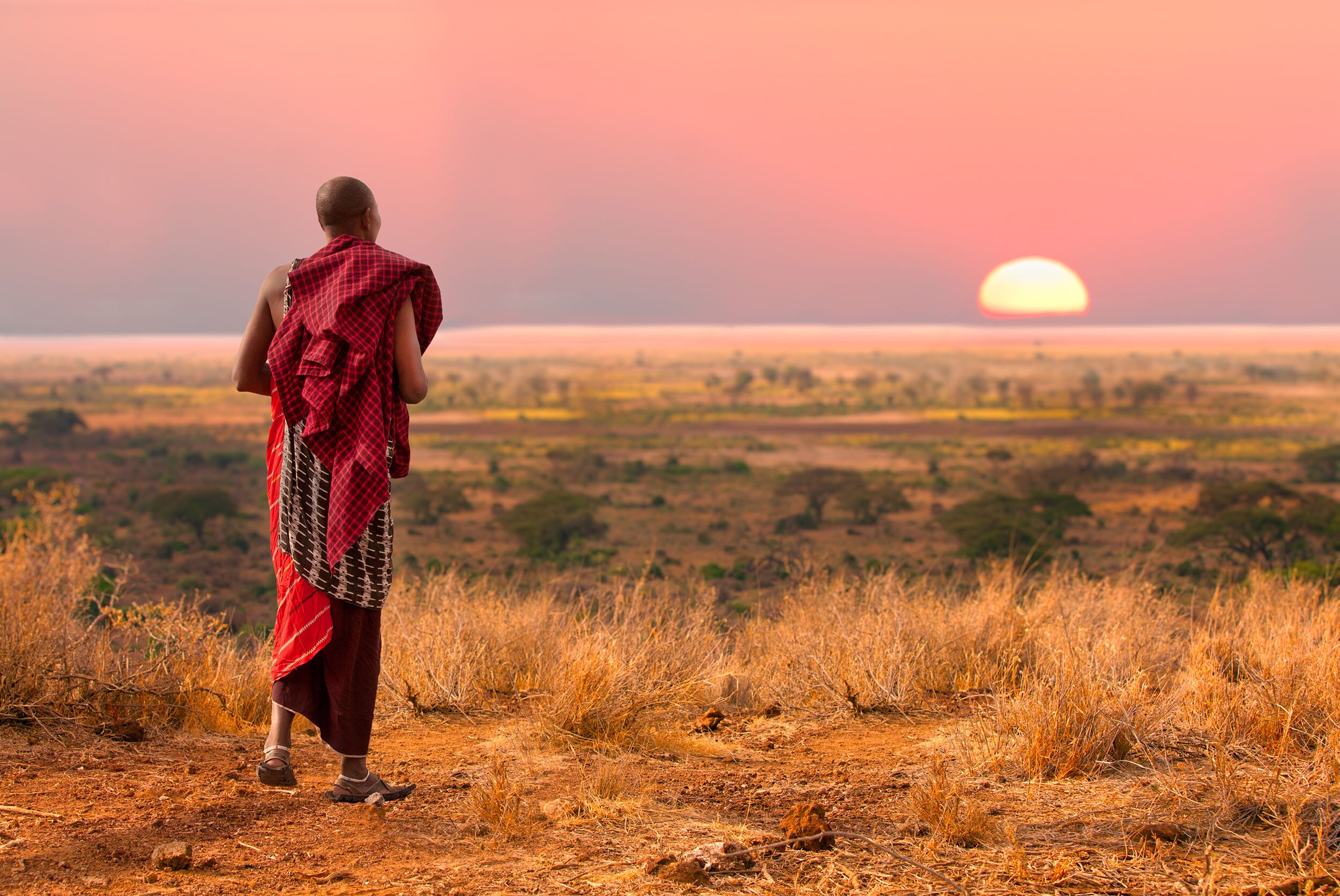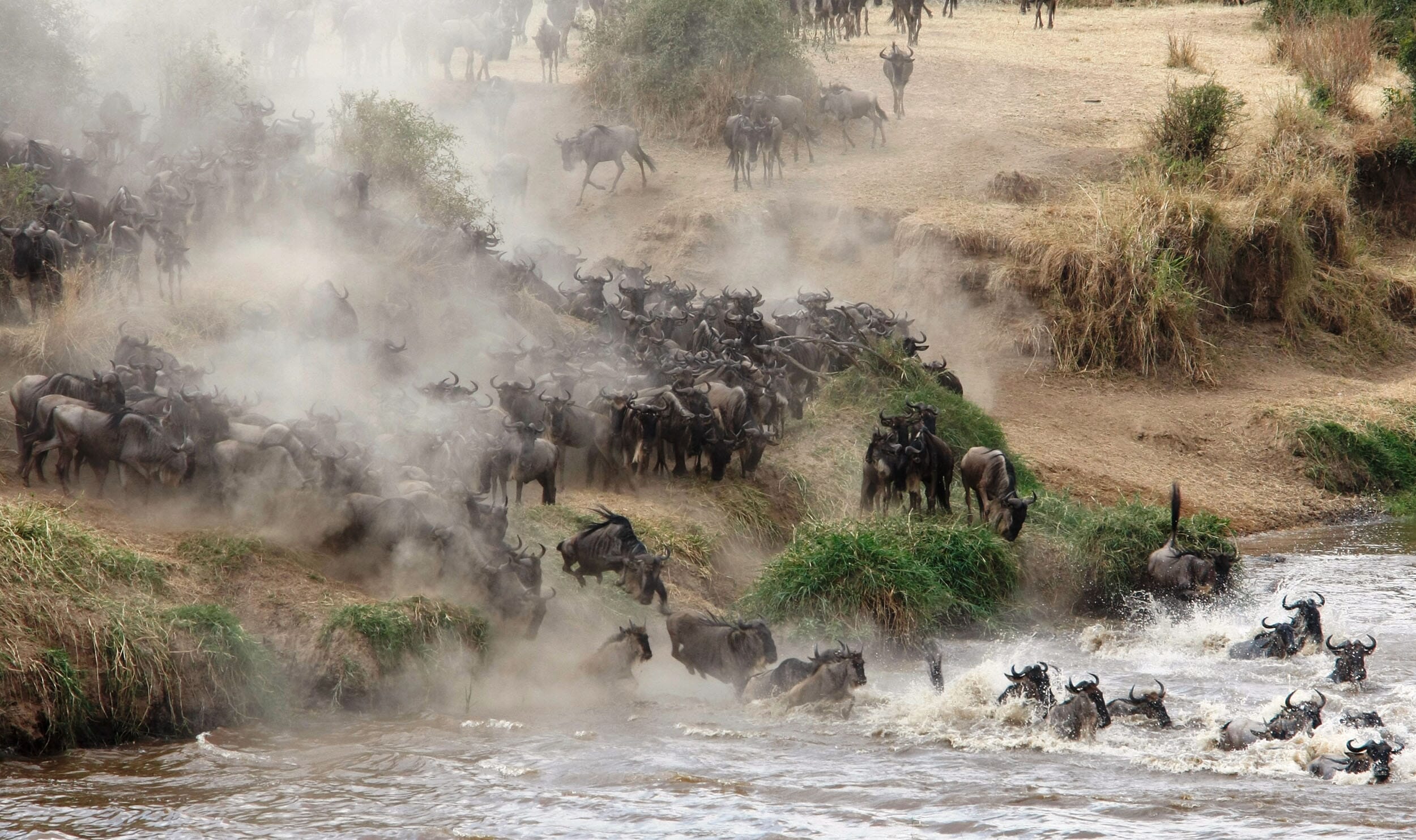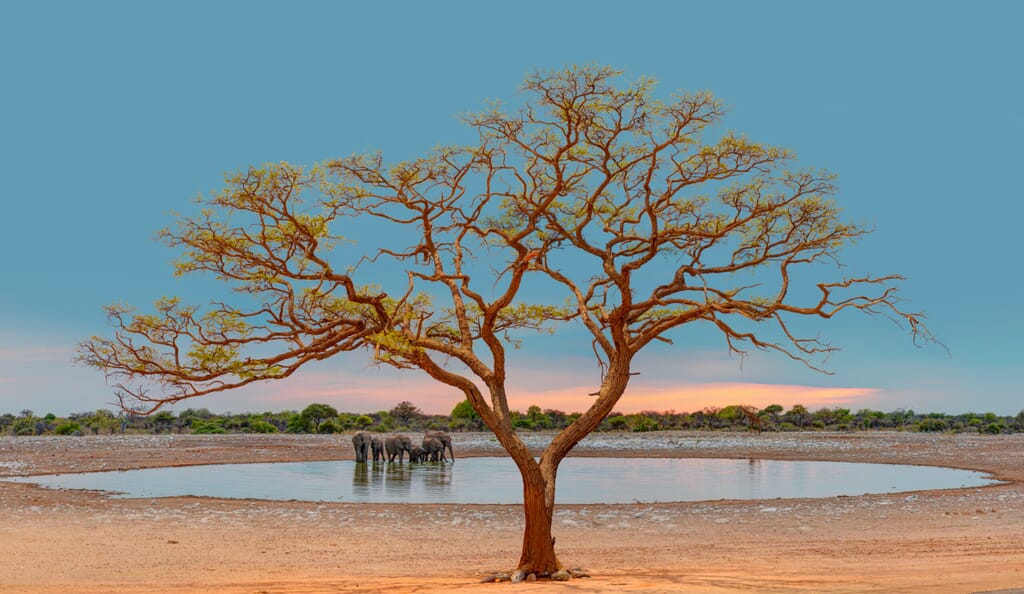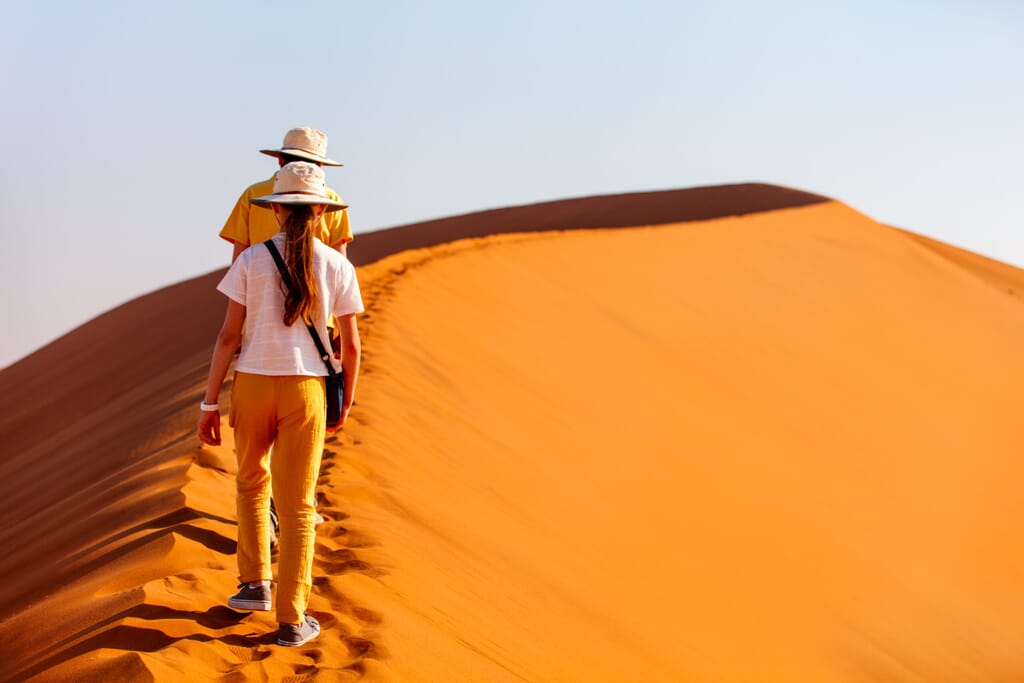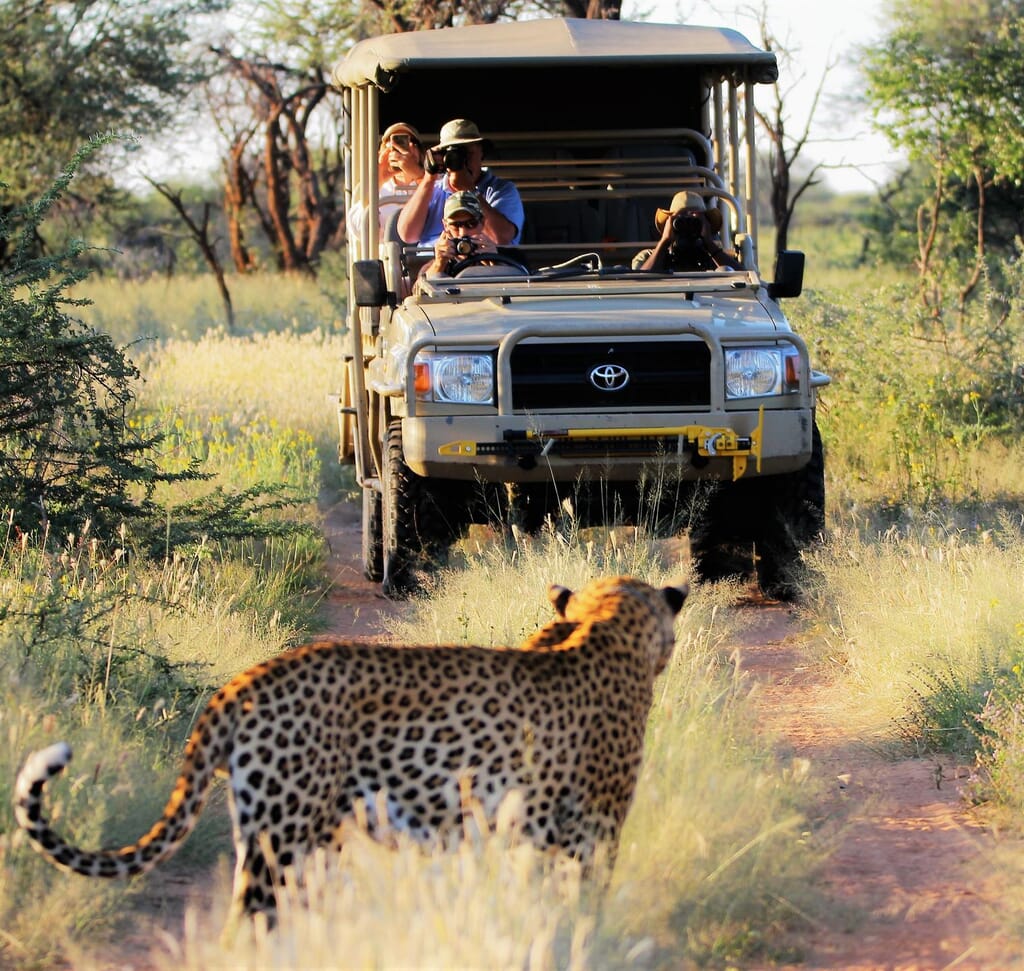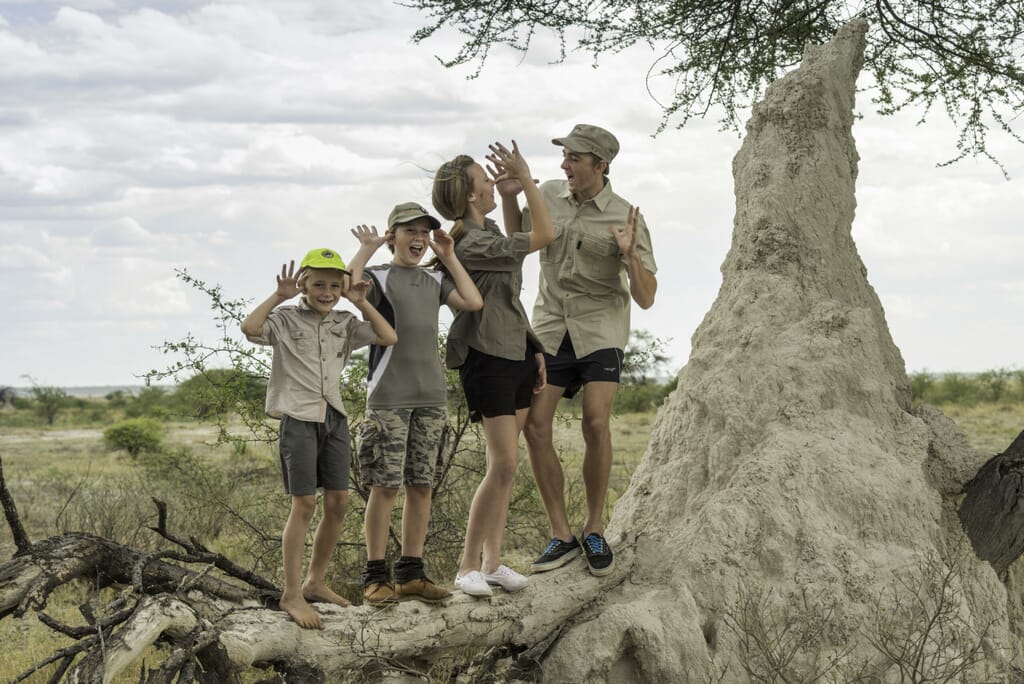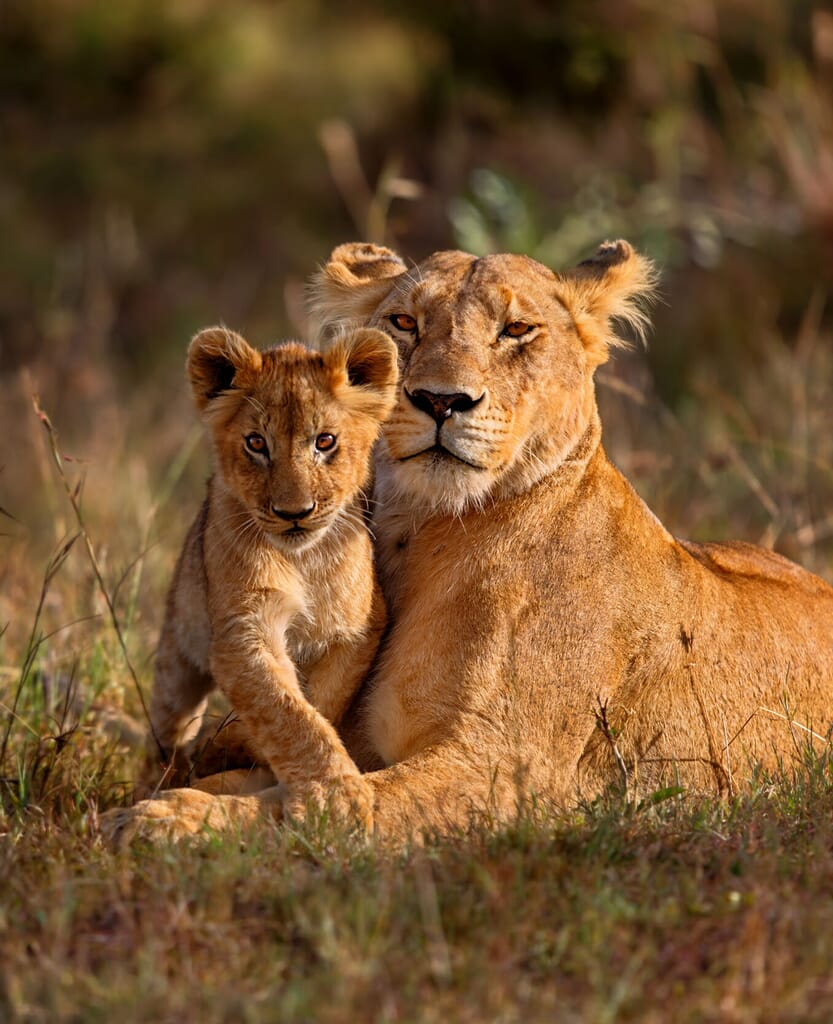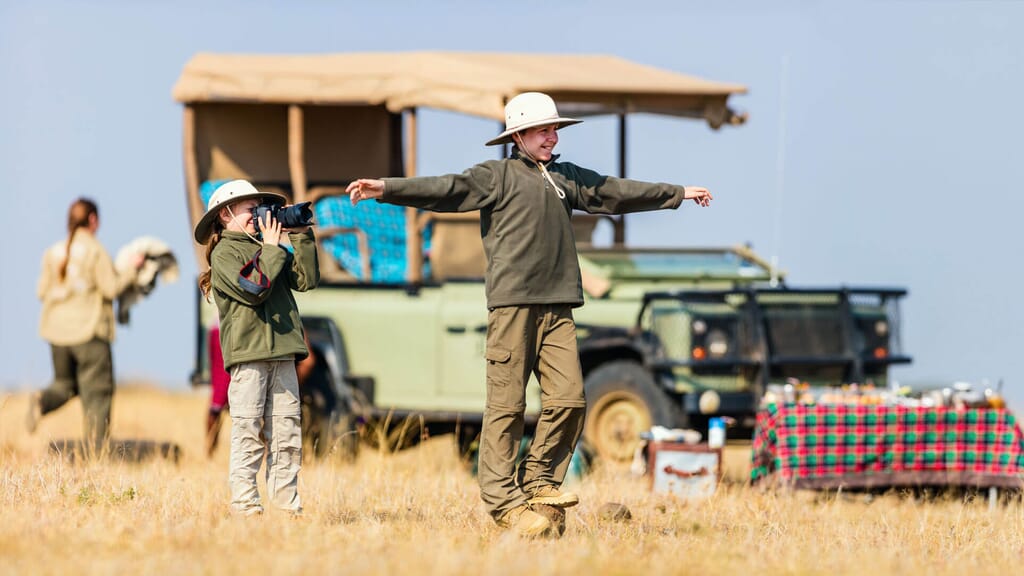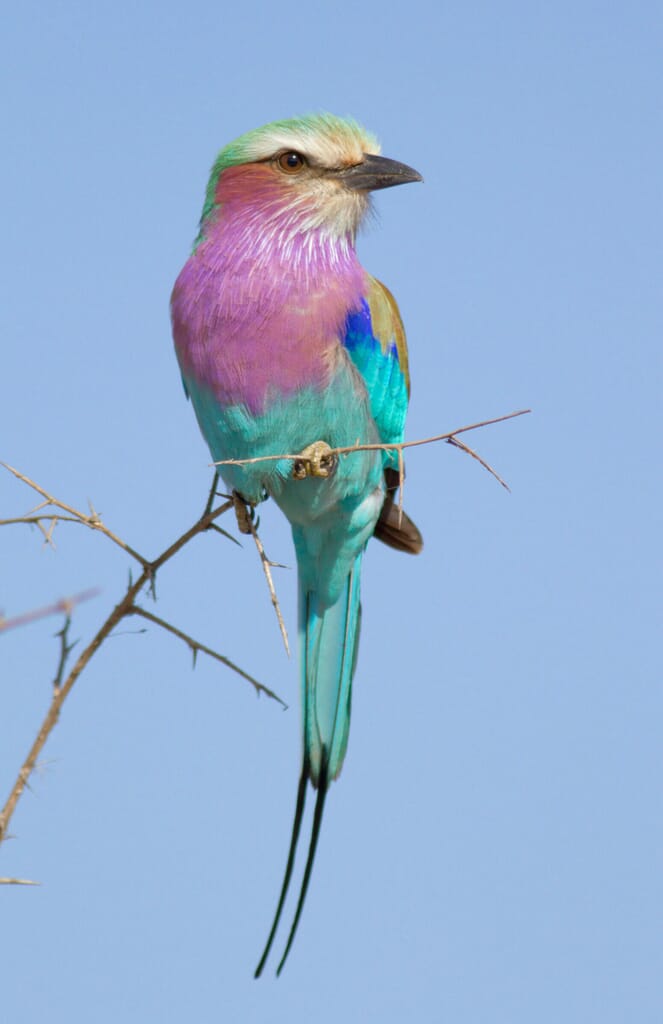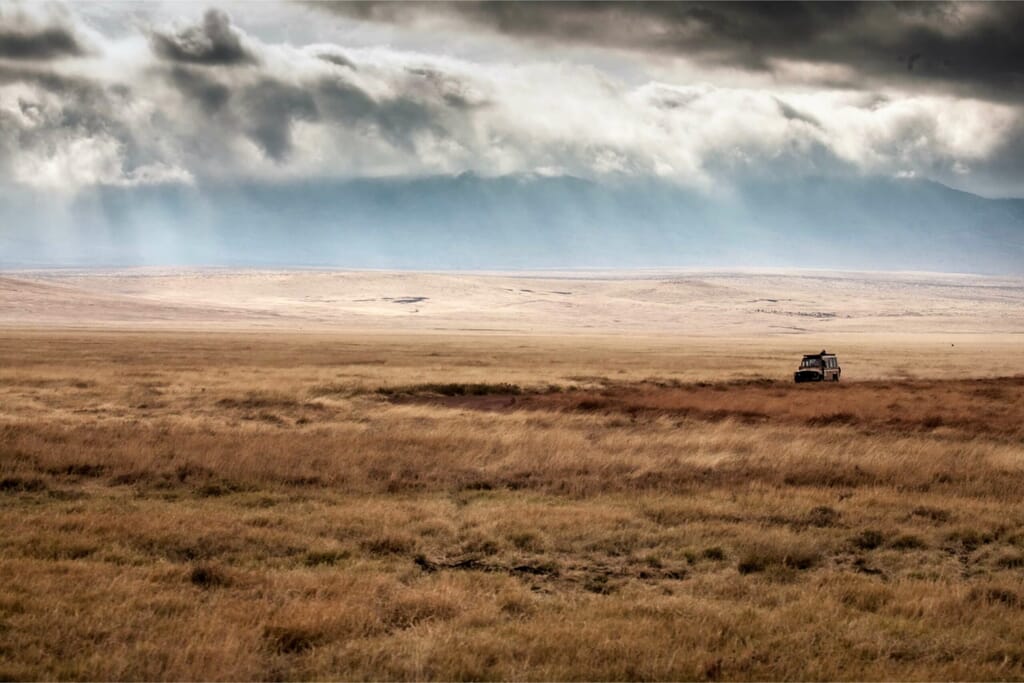
Etosha National Park
Exceptional game viewing in a vast and arid expanse
Overview
Etosha safaris
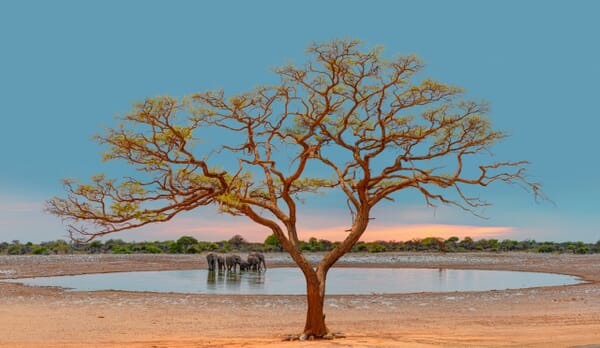
Etosha National Park, a renowned park and one of Africa’s largest, spans over 22,000 square kilometres of semi-arid savannah, salt pans, and acacia woodlands. The unique ecosystem supports a remarkable array of flora and fauna.
Etosha’s defining feature is the immense Etosha Pan, a vast salt flat visible from space, which serves as the park’s heart. Waterholes around the pan draw an astonishing diversity of wildlife, from large herds of elephants wallowing in the water, to lions, leopards, rhinos, giraffes, and countless others all enjoying the natural environment.
The park’s well-maintained network of roads and water holes allow for families to self-drive through the park, though the many comfortable lodges and campsites in the park offer organised excursions with a guide.
Etosha’s accessibility, incredible biodiversity, and dramatic landscapes make it a prime destination for wildlife enthusiasts, photographers, and families seeking an authentic African safari experience.
Overview
Etosha safaris
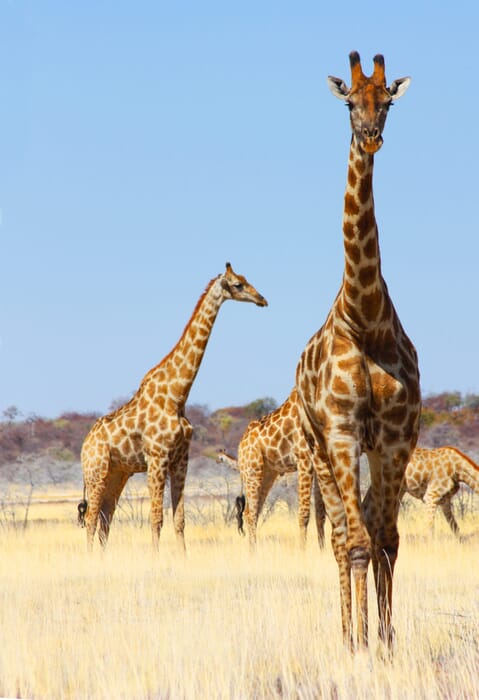
Itinerary ideas
Suggested itineraries for Namibia safaris
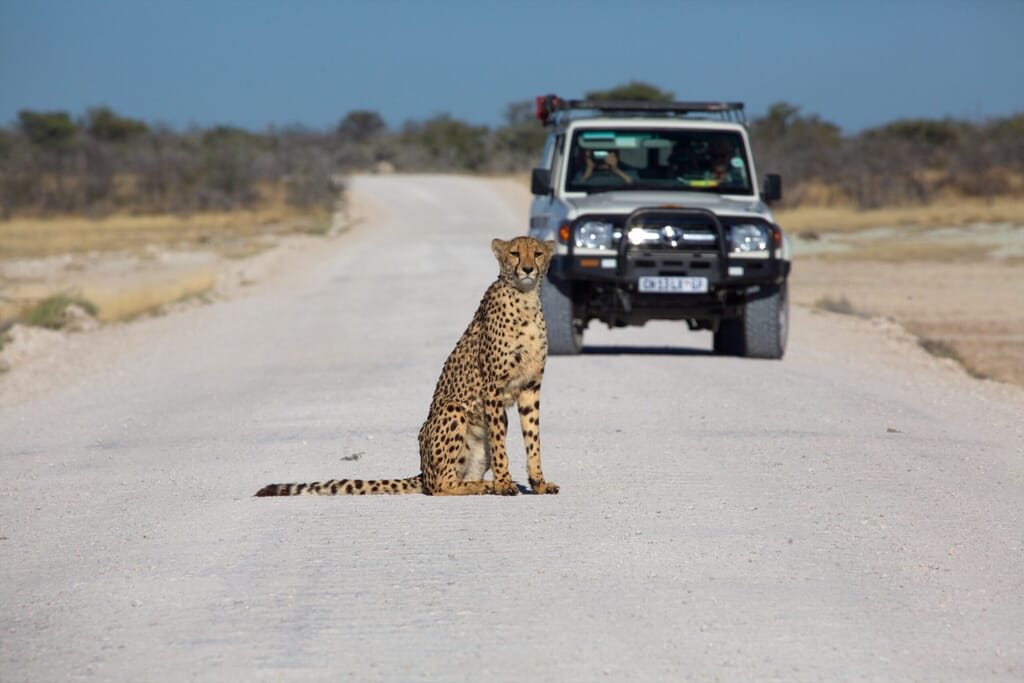
Where is Etosha?
Situated in the northern part of Namibia, Etosha is easily accessible from the capital, Windhoek, with a scenic 5-6 hour drive passing through charming towns and beautiful landscapes, or is an ideal stop after a few days on the Skeleton Coast.
Once you arrive at the park’s gates, a network of roads and signposts guides you through the park’s interior to its various waterholes and wildlife-viewing areas.
Etosha’s strategic location and accessible transportation make it a premier safari destination for families looking for an easy hop to a phenomenally game-rich area.

What to do in Etosha?
Etosha is renowned for its incredible wildlife sightings. Families can embark on self-guided or guided game drives to spot four of the Big Five – elephant, lion, leopard and rhino – all of which are regularly sighted at the park’s watering holes.
With over 2,500 individuals, sights of majestic herds of elephants are a common sight in the park and make a thrilling spectacle as they bathe and drink at the watering holes.
To the east and west of the park are private reserves which are perfect for families who want to escape the crowds or do walking safaris through this unique landscape.
A birdwatcher’s paradise with over 340 different species recorded, spot the wide range of raptors including the martial eagle, Bateleur eagle, pygmy falcon and the rare Verreaux’s eagle as well as the kori bustard, Africa’s heaviest flying bird.

Best time to visit?
During the dry months from June to October, an almost inconceivable amount of game can be found around the watering holes of Etosha National Park.
This is because there is less surface water around and the animals stay closer to permanent water sources. During these months the vegetation is thinner and so spotting wildlife is easier.
Etosha can be visited throughout the year. However, during the wetter months wildlife viewing can be less exciting. Animals tend to disperse across greater distances and are harder to find. This is particularly applicable between the months of December and April.
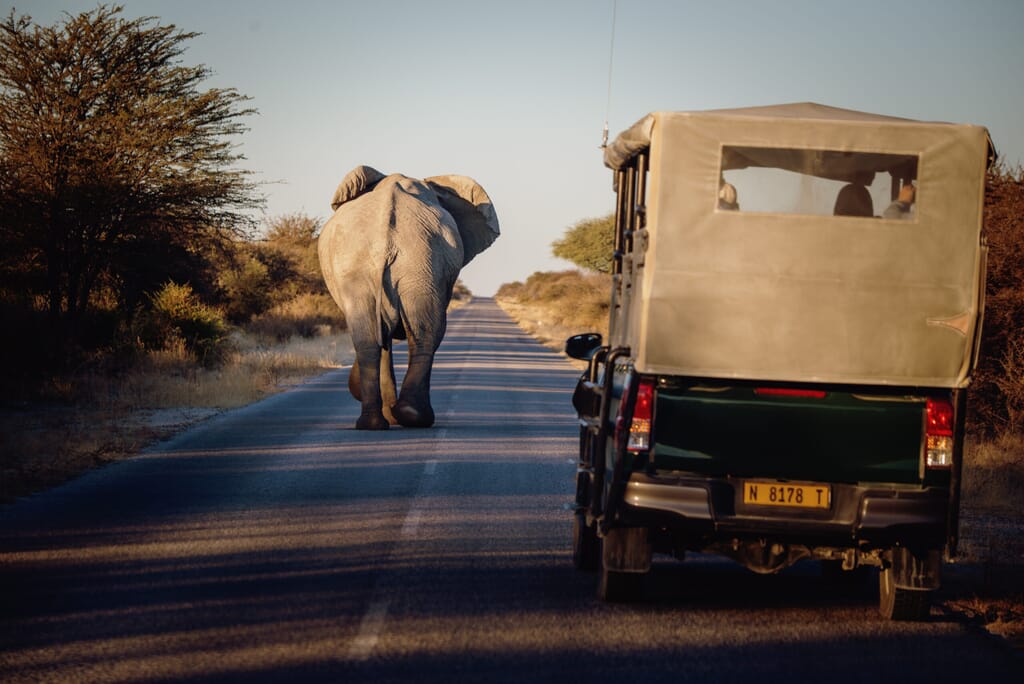
Who should visit?
Etosha National Park, in the heart of Namibia, is an extraordinary destination for families seeking a wildlife-rich adventure.
Children and adults alike will be enthralled by the chance to spot elephants, lions, giraffes, and countless other species in their natural habitat, all from the safety of Etosha’s well-maintained roads.
A visit to Etosha offers all travellers an education in conservation and sustainable tourism – particularly with their success in rehabilitating the black rhino population.


